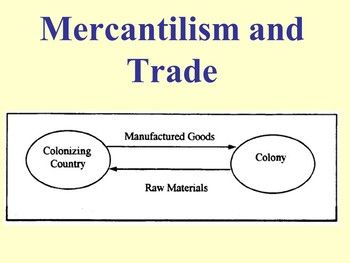In the world of economics, historical schools of thought offer valuable insights into the evolution of economic ideas. Mercantilism, a dominant force from the 16th to the 18th centuries, stands out as a system focused on maximizing a nation’s wealth and power through international trade.
The Core Tenets of Mercantilism:
- Wealth as Finite: Mercantilists viewed global wealth as a fixed pie. One nation’s gain was another’s loss in this zero-sum game.
- Focus on Exports: To increase national wealth, mercantilists advocated for maximizing exports while minimizing imports. A nation’s trade surplus (value of exports exceeding imports) was considered a key indicator of economic strength.
- Government Intervention: Mercantilist policies relied heavily on government intervention to regulate trade. This included:
- High Tariffs: Imposing tariffs on imported goods made them more expensive, discouraging imports and incentivizing domestic production.
- Subsidies: Governments subsidized exports to make them more competitive in the international market.
- Colonization: Establishing colonies provided access to raw materials and new markets for finished goods, further bolstering exports.
Examples of Mercantilist Practices:
- England’s Navigation Acts (1651-1694): These laws mandated that goods could only be transported to England on English ships, boosting the English shipbuilding industry and promoting national maritime power.
- French Colbert Mercantilism: Under finance minister Jean-Baptiste Colbert (1665-1683), France implemented high tariffs, promoted luxury goods production, and established colonies in North America and the Caribbean to secure raw materials and markets.

Impact and Legacy of Mercantilism:
- Economic Growth: Mercantilist policies arguably contributed to the growth of national economies by promoting domestic industries and expanding trade routes. European nations witnessed a rise in manufacturing and trade during the mercantilist era.
- National Rivalries: The emphasis on competition for a finite pool of wealth fueled rivalries between nations, leading to trade wars and colonial expansion.
- Limited Scope: Mercantilism’s focus on accumulating precious metals like gold and silver neglected other forms of wealth, such as advancements in technology and human capital.
Facts:
- The era of mercantilism coincided with the “Age of Exploration,” where European powers actively sought new trade routes and established colonies.
- The emergence of protectionist policies, such as high tariffs, during this period aimed to shield domestic industries from foreign competition.
- While mercantilist policies initially boosted the economies of some European nations, their long-term sustainability was questioned by economists like Adam Smith, who advocated for free trade principles.
The Decline of Mercantilism:
By the 18th century, the limitations of mercantilism became apparent. Critics like Adam Smith argued that free trade, where goods and services can move freely across borders with minimal restrictions, would lead to greater overall economic prosperity. As economies matured and the concept of comparative advantage (a nation’s ability to produce a good or service more efficiently than another) gained traction, mercantilist policies gradually declined.
Conclusion:
Mercantilism, though a product of its time, offers valuable lessons for understanding economic history and the evolution of trade policies. While its focus on accumulating wealth and national power has been surpassed by contemporary economic theories, the mercantilist emphasis on government intervention and fostering domestic production continues to resonate in some aspects of modern trade policy.



Leave a comment